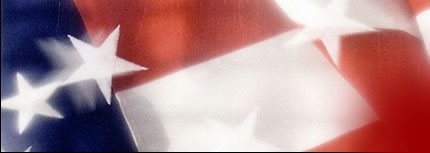Posted: 21 Jun 2010 04:52 AM PDT
Campbell's is recalling a large number of it's signature Spaghettio's canned spaghetti and meatballs products. Turns out somebody in the factory forgot to turn the oven on and the meatballs have been undercooked. If people just heat the product instead of thoroughly cooking the meat, they may get sick. Hence the recall.
Thank you Campbell's for your responsible and swift actions. So far there have been no reports of immediate injury.
[Update: Simultaneously, ConAgra is recalling prepared meals from it's Marie Callender line. Unfortunately in this case, Salmonella may have caused illness across 14 states. (thanks Brooke)]
Hey Campbell's: how about taking the next step and recalling ALL your canned Spaghettio products before they take their toll on additional people's health? Not because they are undercooked, but because each serving contains a mega-dose of unnecessary salt and high fructose corn syrup, without providing any true nutrition benefits.
What you need to know:
Spaghettio's is a product "kids love", according to Campbell's. No doubt. A one cup serving contains almost 3 teaspoons of added sugar (high fructose corn syrup). Not to mention nearly half the daily maximum for sodium consumption.
Though the one cup serving "Contains a full serving of veggies and grains", this super processed product is not something your kids should be eating. Think of it, a pasta dish whose first ingredient is water? And the second one too?
here's the list of ingredients:
WATER, TOMATO PUREE (WATER, TOMATO PASTE), BEEF, ENRICHED MACARONI PRODUCT (WHEAT FLOUR, NIACIN, FERROUS SULFATE, THIAMINE MONONITRATE, RIBOFLAVIN, FOLIC ACID), HIGH FRUCTOSE CORN SYRUP, CONTAINS LESS THAN 2% OF THE FOLLOWING INGREDIENTS: BREAD CRUMBS (BLEACHED ENRICHED WHEAT FLOUR [ENRICHED WITH NIACIN, FERROUS SULFATE, THIAMINE MONONITRATE, RIBOFLAVIN, FOLIC ACID], DEXTROSE, CONTAINS 2% OR LESS OF YEAST, PARTIALLY HYDROGENATED VEGETABLE OIL [SOYBEAN AND/OR COTTONSEED], SALT), SALT, SOY PROTEIN ISOLATE, ENZYME MODIFIED CHEDDAR CHEESE (CHEDDAR CHEESE [MILK, CHEESE CULTURE, SALT, ENZYMES], WATER, DISODIUM PHOSPHATE), DEHYDRATED ONIONS, DEHYDRATED GARLIC, BEEF FLAVOR (CONTAINS BEEF STOCK AND SALT), VEGETABLE OIL, ENZYME MODIFIED BUTTER, SPICE EXTRACT, CITRIC ACID, NONFAT DRY MILK
There's also some trans-fat (partially hydrogenated vegetable oil) to boot.
Come on people, you can do better than eat this. And Campbell's can too. Enough of this canned madness. Sell folks real food that doesn't need to be masked by loads of sugar and salt to make it tasty for us and our kids.
What to do at the supermarket:
If you can't prepare a pasta dish tonight and you have no choice, at minimum buy a prepared meal that is low in sodium (less than 50mg) has little or no added sugars (less the 4 grams/1 teaspoon) and contains no artificial colorings.
Monday, June 21, 2010
Campbell’s Spaghetti-Oh Oh’s [Inside the Label]
Saturday, June 19, 2010
Fwd: CounterThink cartoon: The museum of human atrocities against nature
Human beings actually used to live here...
Click here to read the full commentary or post comments on this cartoon.
You are hereby granted permission to re-publish this CounterThink cartoon on any website or publication that strongly supports natural medicine or health freedom, royalty-free, through January 1, 2012. No written permission required. Hi-res versions available upon request. Contact us for details: http://www.naturalnews.com/feedback.html
Sunday, June 13, 2010
A Visual of Twinkie’s 37 Ingredients
Posted: 11 Jun 2010 04:55 AM PDT
You're looking at the 37 ingredients that make up a Twinkie, photographed by Dwight Eschliman, who grew up in a vegan home but has since loosened up a bit. Try to match the ingredient list to the individual images!
Enriched Bleached Wheat Flour [Flour, Reduced Iron, B Vitamins (Niacin, Thiamine Mononitrate (B1), Riboflavin (B2), Folic Acid)], Corn Syrup, Sugar, High Fructose Corn Syrup, Water, Partially Hydrogenated Vegetable and/or Animal Shortening (Soybean, Cottonseed and/or Canola Oil, Beef Fat), Whole Eggs, Dextrose. Contains 2% or Less of: Modified Corn Starch, Glucose, Leavenings (Sodium Acid Pyrophosphate, Baking Soda, Monocalcium Phosphate), Sweet Dairy Whey, Soy Protein Isolate, Calcium and Sodium Caseinate, Salt, Mono and Diglycerides, Polysorbate 60, Soy Lecithin, Soy Flour, Cornstarch, Cellulose Gum, Sodium Stearoyl Lactylate, Natural and Artificial Flavors, Sorbic Acid (to Retain Freshness), Yellow 5, Red 40.
OK, everybody can guess which plate contains Red 40, but the others all look rather the same. A lot of the additives here are various chemicals in powder form.
Something to picture in your mind the next time you bite into a chemistry lab experiment turned "food".
If you want to learn more, read Twinkie, Deconstructed: My Journey to Discover How the Ingredients Found in Processed Foods Are Grown, Mined (Yes, Mined), and Manipulated Into What America Eats
by Steve Ettinger. It's an entertaining and frightening look at the inner workings of our massive food manufacturing industry.
Oh Boy! Now they’ve Found Lead in Kids’ Fruit Juice/Products
Posted: 12 Jun 2010 05:20 AM PDT
A California non-profit, Environmental Law Foundation, sent some baby and kids' fruit juice and products to a government approved lab for toxic substance testing. Guess what they found?
A surprisingly large number of samples, from both from national and store brands, contained lead above a maximum allowed level of 0.5 microgram per serving.
398 samples from 146 different brands were tested. Products tested were apple and grape juice, packaged pears and peaches, and fruit cocktail.
Brands that tested positive for lead include Beech-nut, Gerber, Earth's Best Organics, Dole, Del-Monte, Kroger, Safeway, Trader Joe's Certified Organic, and others. A full list is here [PDF].
What you need to know:
According to ELF's press release [PDF]:
Scientists agree that there is no safe level of exposure to lead. Lead accumulates in
the body from multiple exposures over time and from multiple sources. According
to Dr. Callahan, "Lead exposure among children is a particular concern because
their developing bodies absorb lead at a higher rate and because children are
particularly sensitive to lead's toxic effects, including decreased I.Q." Lead
exposure also represents a heightened risk among pregnant and nursing women
because lead passes from the mother to the developing fetus or infant.The problem is, nobody's quite sure where the lead is coming from. Is it present in the fruit itself, or added unintentionally somewhere along the manufacturing process? Organic and conventional brands were equally hit.
ELF has sent notices to all the manufacturers. Let's wait and see what they say.
According to NPR, The FDA would not comment on the foundation's findings, though a spokesman confirmed that the federal limits for lead were last updated nearly two decades ago. In the meantime, many scientists, including the American Academy of Pediatrics, now say that there is no safe level of exposure to lead.
What to do at the supermarket:
We recommend no fruit juice for many other reasons beside this lead discovery. Kids should drink water. Fruit should be consumed closest to its natural form. While packaged fruit products do provide some benefits, they are often jacked up with added sugar. Kids don't need it.
Thursday, June 10, 2010
Chocolate Cheerios, Corporate Growth, and Obesity
Posted: 09 Jun 2010 04:45 AM PDT
Once upon a time there was "Cheerios". For almost 40 years, up until the late 1970's, consumers had only one Cheerios flavor to choose from. And then General Mills, corporate owner of the Cheerios brand, introduced Honey Nut Cheerios. It was an instant success. Sweeter (mostly due to sugar, not honey) than it's elder sibling, it quickly conquered the hearts and taste buds of children across America. In the next decade, the two Cheerios brands were served in hundreds of millions of breakfasts across the nation.
But as competition grew, and the need to grow profit too, GM had to continuously innovate to stay ahead. And thus, in the past 15 years, we have seen no less than 15 variations on the "O" theme including Multigrain, Berry Burst, Yogurt Burst, and now Chocolate Cheerios.
Unfortunately, none of the innovations over the years produced a healthier or more nutritious product. Usually a new product meant more sugar added, less fiber, and in some cases additives such as artificial food colorings. But the health claims kept getting better, usually in inverse proportion to the true nutritional value of the product.
So as General Mills has grown, so have our waistlines. We're not picking specifically on this manufacturer. The phenomena is not limited to GM or just the cereal category. It is the story of the food industry as a whole. Cut throat competition and quarterly earning reports mandate "growth! growth! growth!" in sales.
But on the demand side, there's only so many calories people can consume in a day. Or maybe this is the reason we're packing on the pounds?
Anyway, we got a bit carried away. Let's get back to CC (Chocolate Cheerios) and see how this new product stacks up nutritionally.
What you need to know:
The nutrition facts panel tells an interesting story. At 100 calories per serving (before adding milk), CC is on the lower end of the breakfast cereal calorie count. Nice. But as with most cereals, the 3/4 of a cup serving size does not represent what most people truly consume.
Despite the prominent "whole grain guarantee" by manufacturer General Mills, there is only 1 gram of fiber per serving in here. What a let down. Honey Nut Cheerios has 2 grams of fiber. Not to mention regular Cheerios with 3 grams.
Sugarwise, we're talking about 9 grams or just over 2 teaspoons per serving. That's not as high as Cocoa Puffs, but it's nine times more sugar than in regular Cheerios.
Here is the ingredient list:
Whole Grain Corn, Sugar, Corn Meal, Corn Syrup, Whole Grain Oats, Canola and/or Rice Bran Oil, Cocoa Processed with Alkali, Color Added, Salt, Dried Corn Syrup, Corn Bran, Barley Malt Extract, Trisodium Phosphate, Vanillin, Vitamin E (Mixed Tocopherols) and BHT Added to Preserve Freshness. Vitamins and Minerals: Calcium Carbonate, Vitamin C (Sodium Ascorbate), Zinc and Iron (Mineral Nutrients), a B Vitamin (Niacinamide), Vitamin B6 (Pyridoxine Hydrochloride), Vitamin B2 (Riboflavin), Vitamin B1 (Thiamin Mononitrate), Vitamin A (Palmitate), a B Vitamin (Folic Acid), Vitamin B12, Vitamin D3.
Yes it's made with whole grain corn, but also with corn meal. Notice that sugar is the number 2 ingredient. There are four appearances of sugar synonyms in the product. The Cocoa Processed with Alkali – Also known as Dutch Processed Cocoa – helps to remove the natural acidity of the cocoa bean. Unfortunately, it also removes the beneficial flavanoids found in the cocoa beans. BHT (E321) is a controversial additive that keeps a product fresh for longer, but at the potential price of hyperactive kids or cancer.
The most maddening aspect of Chocolate Cheerios though is not what we have discussed so far, but rather the bold health claim that appears inside the red heart:
May Reduce the Risk of Heart Disease
You can't miss it on the box. This claim is qualified in tiny print at the bottom of the box:
Diets low in saturated fat and cholesterol may reduce the risk of heart disease. Chocolate Cheerios is low in fat, saturated fat free, and naturally cholesterol free.
This is such BULL. Of course this product is cholesterol free, it's not made from any animal products. And obviously a breakfast cereal is not going to be high in fats – it's a C E R E A L for heaven's sake. How will all the added sugars help the heart?
As for the logic FAIL. It's the same as saying diets low in salt are heart healthy; candy is low in salt; pig out!!!
Bottom line: Chocolate Cheerios may be a tasty treat, but not a mainstay nutritious breakfast cereal.
What to do at the supermarket:
If you're going to buy a Cheerios product, your top choice should be the original. Number 2 should be the multigrain followed by Honey Nut. Leave Chocolate Cheerios product be.
Monday, June 7, 2010
9 Tips For Choosing a Better Salad Dressing
Also, watch out for chemicals that you can't ponounce. There's propylene glycol: ANTIFREEZE.
Posted: 07 Jun 2010 04:45 AM PDT
Spring will shortly turn to summer and salad season is shifting into full gear. With plenty of fresh greens at reasonable prices, there is really no excuse not to get your daily (or twice daily) fix. Build a meal around a good mix of leafy vegetables with the usual assortment of tomatoes, cucumbers, onions, and whatnot.
And what's a salad without a dressing? It's like Bert without Ernie, sesame without the chicken, a bun without the burger. You get it, a salad is not a salad without the good stuff drizzled on top.
Food manufacturers have realized this long ago, and today, entire supermarket aisles are dedicated to salad dressings and toppings.
Here's a short list of suggestions to help you make the best of your lettuce:
1. Make your own dressing. Really. In most parts of the world, it's unthinkable to buy a dressing. It's as easy as mixing 3 parts oil, 1 part lemon/vinegar, and adding salt and pepper to taste. From there, you can build up your dressing with additional herbs and spices. There's no shortage of recipes.
The following tips are for prepared dressings:
2. Serving size and calories: the standard is 2 tablespoons, with a caloric range of 50-200+ calories per serving. An easy way to cut the calories is to use less dressing. Mix the dressing and salad a bit more, until you can't see any blobs of sauce, just a shiny coating all over the salad greens.
3. Don't water down you salad. Many of the low-fat, or non-fat dressings are composed mostly of water. You're paying over $4.00 for a bottle of dressing, the least they could do is fill it up with a more expensive ingredient like fine olive oil. Also – why drown your greens after you've dried them up so nicely before serving?
4. A little bit of fat ain't bad. Vitamins A, D, E, and K are fat soluble meaning your body will be more likely to absorb them when they're mixed with some oil.
5. Skip the toppings. While they may add extra crunch and flavor, the caloric and sodium contribution of bacon bits and croutons almost negate the purpose of the salad – a filling, healthy meal.
6. Watch out for the added sugars. Some dressings can get really tangy, so a bit of sugar rounds out the flavor remarkably. The problem is that in many cases, manufacturers add too much: Wishbone's Red Wine Vinaigrette Salad Dressing has an ingredient list that starts with High Fructose Corn Syrup. It contains 2 teaspoons of added sugar per serving!
7. Salty? One of the big challenges in salad dressing is the sodium content which can be as higher than 500mg per serving. That's close to 20% of the daily maximum. Look for 300mg per serving or less.
8. Look out for Calcium Disodium EDTA. It's a preservative with a mildly salty taste. May cause kidney damage, and blood in urine. It's on the FDA priority list of food additives to be studied for mutagenic, teratogenic, subsacute, and reproductive effects.
9. Many dressings use phosphoric acid (E338), an artificial additive that provides a tangy taste for a much cheaper price than lemons. It is also used in soft drinks. Some studies have linked it to lowering bone density.
---
Sunday, June 6, 2010
Kellogg’s Slapped by FTC, Twice, for Misleading Ads
Posted: 04 Jun 2010 04:50 AM PDT
The Federal Trade Commission normally doesn't get involved in misleading health claims for foods, it's the FDA's jurisdiction. But something in Kellogg's behavior over the past 2 years must have really annoyed somebody at the FTC.
At first it was a health claim for Frosted Mini-Wheats, with benefits to"cognitive health". The unsubstantiated claim was shot down by the FTC, but within a few months, Kellogg's came out with its immunity cereal. So now the company is again in trouble:
Leading cereal maker Kellogg Company has agreed to new advertising restrictions to resolve a Federal Trade Commission investigation into questionable immunity-related claims for Rice Krispies cereal. This is the second time in the last year that the FTC has taken action against the company.
"We expect more from a great American company than making dubious claims – not once, but twice – that its cereals improve children's health," said FTC Chairman Jon Leibowitz. "Next time, Kellogg needs to stop and think twice about the claims it's making before rolling out a new ad campaign, so parents can make the best choices for their children." read more…
What you need to know:
Health claims are an unfortunate extension of product marketing efforts that overlap scientific information provided to consumers on the nutrition facts panel and ingredient list of packaged foods. Fuzzy at best, they create a false sense of hope and add value to products that in some cases may merit it, but in many cases don't.
Cocoa Rice Krispies are over 40% sugar by weight and contain trans-fat. How does that contribute to immunity?
What to do at the supermarket:
May we suggest ignoring the large font writing on food products, and sticking to the facts in the nutrition label itself.
Those Poison McDonalds Shrek Glasses are the LEAST of Parents’ Worries
Those Poison McDonalds Shrek Glasses are the LEAST of Parents' Worries
Posted: 05 Jun 2010 05:32 AM PDT
Yesterday it was announced that McDonald's is recalling about 12 million souvenir glasses adorned with Shrek images. The $2.00 glasses were painted using cadmium, a known carcinogen. The fear is that cadmium present in the paint on the glass will poison kids. This would require a child to hold the glass whereby the cadmium would contact her hands. Then she would need to put her hand in her mouth. This would have to happen repeatedly.
OK, not to knock the risk, but folks, there is a much larger risk to kids who frequent fast food establishments such as McDonalds. It's called obesity.
And as long as fast food and junk food companies lure kids with Hollywood brands, parents will continue to struggle to say NO to little Johnny.
So let's put things in the right perspective.
We await the day when McDonald's recalls its entire "marketing to kids" strategy.
Friday, June 4, 2010
General Halstead on Chiropractic
Gen. Halstead's Memorial Day Media Tour a Success
Foundation for Chiropractic Progress (www.f4cp.com) spokesperson, Ret. Brig. Gen. Becky Halstead, completed a successful Memorial Day Media Tour -- a day of interviews calling attention to the mental and physical strain experienced by members of the U.S. Armed Forces. The media tour, which kicked off in New York City with an appearance on Fox & Friends (FOX News Channel), America's most watched cable news morning show, concluded in Washington, D.C., with a live hour-long interview on the The Jim Bohannon Show, which broadcasts on more than 350 radio stations across the country.
During her interview with Fox & Friends (View Video Here) Gen. Halstead commented on the value of chiropractic care for all members of the military, in addition to discussing the importance of recognizing and honoring our nation's veterans and active-duty military.
"Chiropractic helps our soldiers maintain and sustain their whole physical stature as they wear very heavy gear," stated Gen. Halstead.
The hour-long interview (Listen to Interview Here) with Jim Bohannon in Washington, D.C., allowed Gen. Halstead to discuss several hot topics in today's military more in-depth, including women's roles in the military and soldier "readiness." Gen. Halstead was also able to share her personal experience dealing with fibromyalgia and how chiropractic care helped her return to a pain-free life.
"Part of getting well was a strong introduction to the chiropractic community, which I think would have really helped me if I could have received the treatment while I was on active duty," Gen. Halstead noted.
During the radio interview, Gen. Halstead also detailed her visit to the Connecticut Veteran Affairs (VA) Hospital where she had a chance meeting with a young soldier who was suffering with a herniated disc. After two years of physical therapy, the solider was referred to chiropractic care and much like Gen. Halstead, was on the road to recovery. The soldier, who was receiving a chiropractic adjustment, spoke with Gen. Halstead about the benefits chiropractic care would have on active duty military.
"Just think if we came in off our patrols each night and we could get adjusted the way I just got adjusted, what a sense of relief and healing," Gen. Halstead recalled the soldier saying.
Gen. Halstead was thrilled to participate in both interviews, taking the opportunity to not only remember and recognize the fallen soldiers and families for their service, but to educate everyday citizens on the importance of keeping our military ready for battle.
"I hope my message instilled a sense of responsibility in everyone to properly resource and support our military men and women," concluded Gen. Halstead.
About F4CP
A not-for-profit organization, the Foundation for Chiropractic Progress (F4CP) embraces a singular mission to promote positive press for the profession in national, regional and local media. Through effective and ongoing initiatives, the Foundation's goal is to raise awareness to the many benefits provided by doctors of chiropractic. The F4CP relies upon strategic marketing campaigns that span prominent spokespersons, monthly press releases, public service announcements, and advertisements in high-profile media outlets. To learn more about the Foundation, please visit us on the web at www.foundation4cp.comor call 866-901-F4CP (3427).
Foundation for Chiropractic Progress. www.f4cp.com (866) - 901-3427















